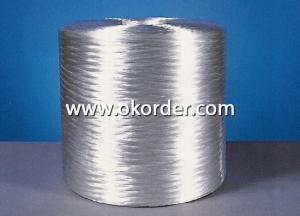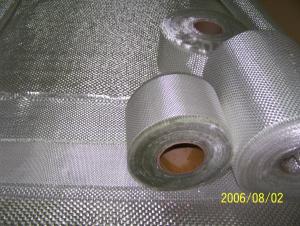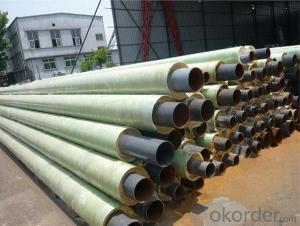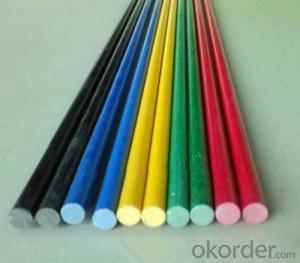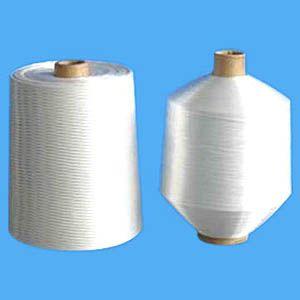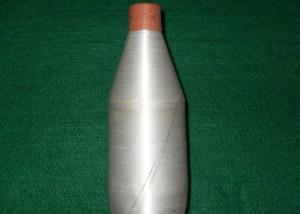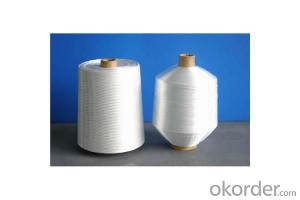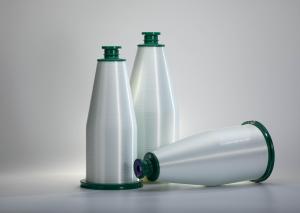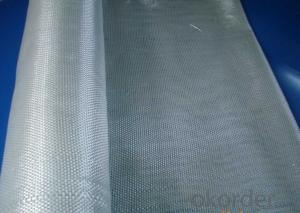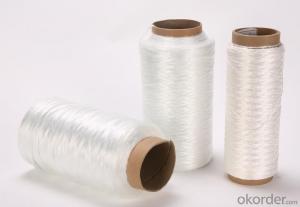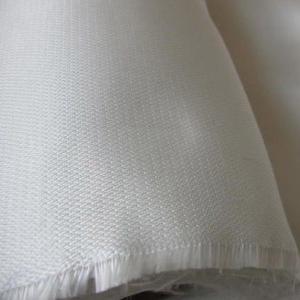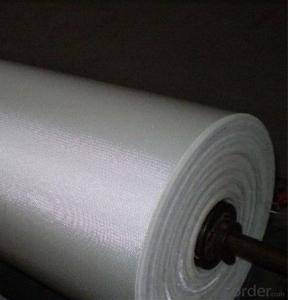Fiberglass Fabric for Sound Absorption ISO:9001
- Loading Port:
- Shanghai
- Payment Terms:
- TT OR LC
- Min Order Qty:
- 500 m²
- Supply Capability:
- 50000 m²/month
OKorder Service Pledge
OKorder Financial Service
You Might Also Like
Fiberglass Fabric for Sound Absorption ISO:9001
Fiberglass Fabric Introduction:
Fiberglass fabric is weaved by high quality fiberglass,as a kind of engineering material,which is
many excellent characteristics:
flame-resisting,corrosion resistant,high strength,heat resistance.stable structure,good chemical resistance,durability.
Fiberglass Fabric Features:
Warp and weft yarns are parallel arrangement as flat situation, with uniform tension;
Fiber is aligned with large consistency, stable and easy operation;
Good moldability, fast and complete wet out in resins, resulting in high productivity;
Good transparency and high strength of composite products.
Fiberglass Fabric Specification:
mark | Fiber consistency(ends/ cm) |
Area weight (g/ m2) |
Thick-ness (mm) |
Width (cm) |
Length (mm) | Breaking strength(N)≥ |
weave | |||
Warp direction | Weft direction | Warp direction | Weft direction | |||||||
EW200 | 16 | 12 | 200±20 | 0.2 | 90-130 | 300-1200 | 980 | 980 | ||
EW210 | 16 | 12 | 200±20 | 0.21 | 90-130 | 300-1200 | 1080 | 1080 | Twill weave | |
Plain weave | ||||||||||
EWR360 | 3.2 | 1.8 | 354±18 | 0.35 | 50-300 | 100 | 2000 | 2000 | ||
EW280 | 16 | 10 | 280±28 | 0.26 | 90-130 | 300-1200 | 1800 | 1800 | ||
EW300 | 14 | 10 | 320±32 | 0.3 | 90-130 | 300-1200 | 1500 | 1500 | ||
EW430 | 20 | 12 | 420±42 | 0.43 | 90-130 | 300-1200 | 2000 | 2000 | Broken twill | |
EWR136 | 10 | 10 | 136±13 | 0.136 | 100 | 200 | 850 | 850 |
Plain weave | |
EWR200 | 8 | 7 | 200±20 | 0.21 | 100 | 200 | 1200 | 1200 | ||
EWR400 | 3.6 | 3.2 | 400±30 | 0.4 | 100 | 50-100 | 2500 | 2500 | ||
EWR600 | 2.6 | 2.5 | 600±50 | 0.6 | 100 | 40KG | 4000 | 4000 | ||
EWR580 | 2.5 | 2.3 | 576±29 | 0.58 | 100 | 40KG | 3850 | 3850 | ||
EWR800 | 1.8 | 1.8 | 800±60 | 0.8 | 100 | 40KG | 4600 | 4600 | ||
Product Show
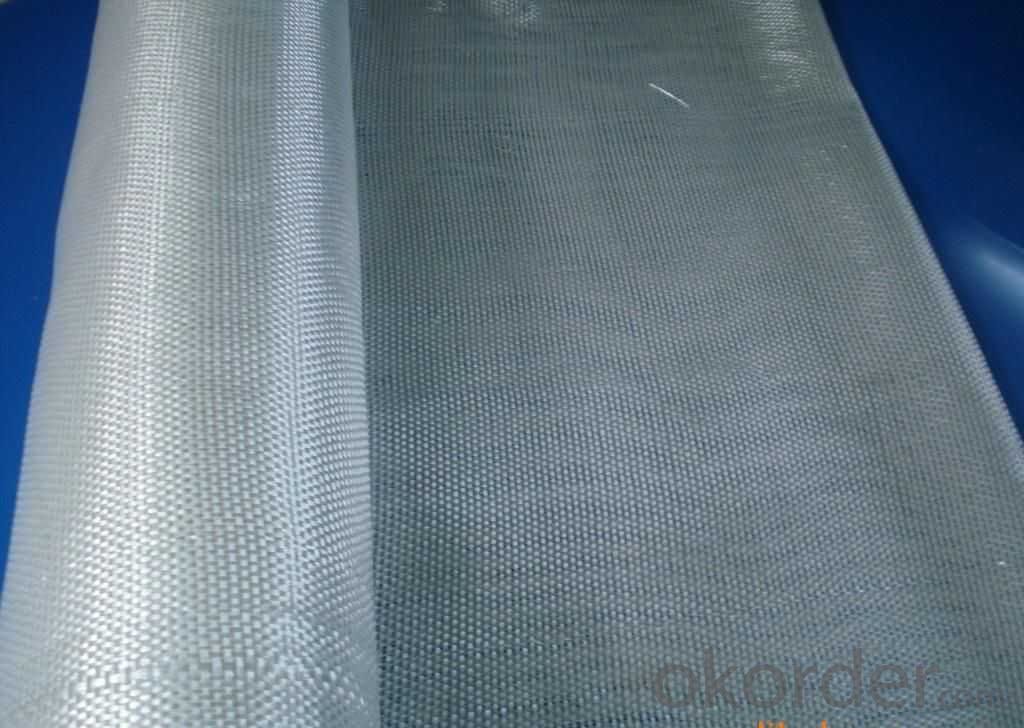
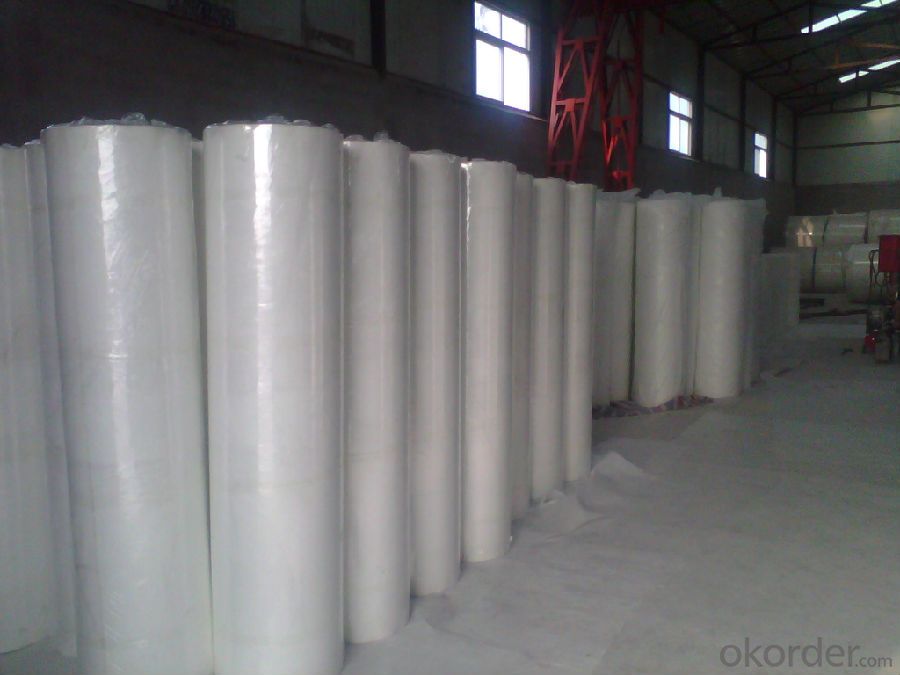
Fiberglass Fabric Usage:
E-glass woven roving is a schistose double faces reinforcement fabric that is weaved into from roving in directly.
E-glass fiber fabric (thin fabrics with thickness from 0.025 to 0.09mm) is suitable for electrical isolation mica product, wax cloth as the reinforcement materials.
E-glass woven roving applys to all kinds of polyester reinforcement system, (such as unsaturated polyester resin, vinylite,epoxy resin and phenolic resin.
E-glass woven roving is a high performance reinforcement material. It is widely used in hand lay-up and machinery processing products, (such as vessel, container, airplane and vehicle component, furniture, athletic facilities and other industry.
FAQ
1.Package of Fiberglass Fabric?
Fiberglass fabric is wound on a paper tube with inner diameters of 50. 8, 76 or 152mm. Each roll is wrapped in a plastic bag, then to be packed in a carton box. The rolls are to be horizontally placed.
Width (cm): 90, 100, 127
Length (m): 100, 200, 300, 400
2.Storage of Fiberglass Fabric?
Store rolls in a cool, dry location
Protect rolls from weather and other damage.
3.If sample available if needed?
We aim to offer our customer best Products&Service,samples are allowed if necessary.
- Q:Can fiberglass yarn be used in reinforcement of concrete pipes?
- Yes, fiberglass yarn can be used in the reinforcement of concrete pipes. It provides additional strength and durability to the pipes, making them more resistant to cracking and structural damage.
- Q:What are the common certifications or standards for fiberglass yarn?
- Some common certifications or standards for fiberglass yarn include ISO 9001 (quality management), ISO 14001 (environmental management), and ASTM D578 (specification for glass fibers for reinforcing plastics).
- Q:Is fiberglass yarn suitable for making sports jerseys or uniforms?
- Yes, fiberglass yarn is not suitable for making sports jerseys or uniforms. Fiberglass yarn is typically used in applications that require high strength, heat resistance, and insulation properties, such as in the aerospace and automotive industries. Sports jerseys and uniforms, on the other hand, need to be breathable, lightweight, and comfortable for athletes to wear. Therefore, materials like polyester, nylon, or mesh fabrics are more commonly used in sportswear manufacturing.
- Q:How does the strength of fiberglass yarn compare to other materials?
- Many consider fiberglass yarn to have greater strength than numerous other materials. It is renowned for its remarkable tensile strength, enabling it to endure substantial stress or pulling forces without fracturing or stretching. In comparison to materials such as cotton, wool, or nylon, fiberglass yarn is generally significantly stronger. Moreover, fiberglass exhibits exceptional resistance to chemicals, moisture, and heat, rendering it an exceedingly durable and adaptable substance. It is extensively utilized in diverse applications that prioritize strength and durability, including the production of boats, aircraft, automotive components, and construction materials.
- Q:Can fiberglass yarn be used for making moldings or trims?
- Certainly, moldings or trims can indeed be made using fiberglass yarn. Fiberglass possesses versatility as a material, being recognized for its strength, durability, and ability to withstand various environmental elements like moisture, chemicals, and UV radiation. These attributes make fiberglass yarn an ideal option for the manufacturing of moldings and trims, particularly in industries like automotive, construction, and marine. Fiberglass yarn can be woven or knitted into diverse shapes and sizes, enabling easy molding into the desired form for moldings or trims. Its flexibility and capacity to conform to intricate shapes make it a preferred choice for creating detailed designs and patterns. Moreover, fiberglass moldings and trims can be produced in different colors and finishes, offering a wide range of options to match specific aesthetic and design requirements. Furthermore, the inherent strength and durability of fiberglass yarn make it highly resistant to wear, tear, and impact, ensuring that moldings and trims crafted from it will endure daily use and retain their shape over an extended period of time. This makes fiberglass moldings and trims an excellent choice for applications necessitating longevity and resistance to damage, such as high-traffic areas or outdoor environments. Additionally, fiberglass yarn possesses excellent dimensional stability, meaning it undergoes minimal expansion or contraction with changes in temperature. This characteristic guarantees that moldings and trims made from fiberglass yarn will maintain their shape and size, even under extreme temperature conditions. In conclusion, fiberglass yarn is a suitable material for the production of moldings and trims due to its strength, durability, resistance to various environmental factors, flexibility, and ability to conform to complex shapes. With its array of available colors and finishes, as well as its longevity and dimensional stability, fiberglass yarn proves to be a practical and visually pleasing choice for diverse industries and applications.
- Q:Can fiberglass yarn be woven or knitted?
- Fiberglass yarn possesses the capability to undergo weaving or knitting processes. As a versatile material, fiberglass yarn finds its utility in diverse applications, particularly in textiles. Weaving entails the interlacing of multiple strands of fiberglass yarn, ultimately generating a fabric. This woven fiberglass fabric finds application in the manufacturing of items like curtains, drapes, upholstery, and even clothing. Similarly, fiberglass yarn can also be knitted together to produce a knitted fabric. This knitted fiberglass fabric serves various industries such as automotive, aerospace, and construction, where it is employed for insulation, reinforcement, and protection purposes. In summary, fiberglass yarn can be successfully employed in both weaving and knitting, thus presenting a wide array of possibilities and applications within the textile industry.
- Q:Is fiberglass yarn suitable for textile manufacturing?
- Yes, fiberglass yarn is suitable for textile manufacturing. Fiberglass yarn is made from strands of glass fibers that are twisted together to form a strong and durable thread. It has several properties that make it suitable for textile production. Firstly, fiberglass yarn is highly resistant to heat and fire. This makes it an excellent choice for manufacturing protective clothing, such as fire-resistant suits or insulation materials. It can withstand high temperatures without melting or degrading, providing a high level of safety for the wearer. Secondly, fiberglass yarn is known for its high tensile strength. It is stronger than many other textile materials, such as cotton or polyester. This strength makes it suitable for applications that require durability and resistance to tearing or breaking, such as industrial fabrics, reinforcement materials, or composite materials. Additionally, fiberglass yarn has good chemical resistance. It is not easily damaged by exposure to chemicals or solvents, making it suitable for manufacturing textiles that will be used in harsh environments, such as chemical plants or laboratories. Furthermore, fiberglass yarn is lightweight and has good flexibility. This makes it comfortable to wear and easy to handle during the textile manufacturing process. It can be easily woven, knitted, or braided into different fabrics or products. However, it is important to note that fiberglass yarn can be irritating to the skin and may cause itching or discomfort. Therefore, it is often used in combination with other fibers or coatings to improve its comfort and usability in clothing or other textile applications. In summary, fiberglass yarn is a suitable material for textile manufacturing due to its heat resistance, high tensile strength, chemical resistance, and flexibility. However, its potential skin irritation should be taken into consideration and mitigated through appropriate processing or blending with other fibers.
- Q:How does fiberglass yarn affect the breathability of a product?
- Fiberglass yarn can significantly impact the breathability of a product. Due to its non-porous and tightly woven nature, fiberglass yarn restricts the passage of air and moisture, thus reducing the breathability of the product. This can result in increased heat and moisture retention, potentially leading to discomfort and decreased overall breathability.
- Q:How does fiberglass yarn perform in alkaline environments?
- Fiberglass yarn is known for its excellent performance in alkaline environments. The material is highly resistant to alkalis, making it suitable for various applications where exposure to alkaline substances is expected. When exposed to alkaline environments, fiberglass yarn maintains its structural integrity and does not degrade or weaken over time. This resistance to alkalis is due to the inherent properties of the glass fibers used in the yarn, which are chemically inert and do not react with alkaline substances. As a result, fiberglass yarn can withstand prolonged exposure to alkaline environments without experiencing any significant deterioration or loss in its mechanical properties. Whether used in construction, insulation, or other industrial applications, fiberglass yarn is a reliable and durable option for environments with high alkalinity.
- Q:What are the electrical conductivity properties of fiberglass yarn?
- Fiberglass yarn has low electrical conductivity properties due to the non-conductive nature of glass fibers.
1. Manufacturer Overview |
|
|---|---|
| Location | |
| Year Established | |
| Annual Output Value | |
| Main Markets | |
| Company Certifications | |
2. Manufacturer Certificates |
|
|---|---|
| a) Certification Name | |
| Range | |
| Reference | |
| Validity Period | |
3. Manufacturer Capability |
|
|---|---|
| a)Trade Capacity | |
| Nearest Port | |
| Export Percentage | |
| No.of Employees in Trade Department | |
| Language Spoken: | |
| b)Factory Information | |
| Factory Size: | |
| No. of Production Lines | |
| Contract Manufacturing | |
| Product Price Range | |
Send your message to us
Fiberglass Fabric for Sound Absorption ISO:9001
- Loading Port:
- Shanghai
- Payment Terms:
- TT OR LC
- Min Order Qty:
- 500 m²
- Supply Capability:
- 50000 m²/month
OKorder Service Pledge
OKorder Financial Service
Similar products
New products
Hot products
Hot Searches
Related keywords



